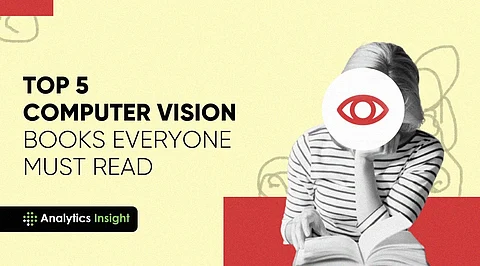
- Insights
- Cryptocurrencies
- Stocks
- White Papers
- Industry
- Geography
- Insights
- Cryptocurrencies
- Stocks
- White Papers
- Industry
- Geography


Computer vision is a field of artificial intelligence (AI) that enables computers and systems to derive meaningful information from digital images, videos, and other visual inputs — and take actions or make recommendations based on that information. If AI enables computers to think, computer vision enables them to see, observe and understand.
Computer vision works much the same as human vision, except humans have a head start. Human sight has the advantage of lifetimes of context to train how to tell objects apart, how far away they are, whether they are moving, and whether there is something wrong in an image.
Computer vision trains machines to perform these functions, but it has to do it in much less time with cameras, data, and algorithms rather than retinas, optic nerves, and the visual cortex. Because a system trained to inspect products or watch a production asset can analyze thousands of products or processes a minute, noticing imperceptible defects or issues, it can quickly surpass human capabilities.
It is used in industries ranging from energy and utilities to manufacturing and automotive – and the market is continuing to grow. It is expected to reach USD 48.6 billion by 2022.
Computer vision needs lots of data. It runs analyses of data over and over until it discerns distinctions and ultimately recognizes images. For example, to train a computer to recognize automobile tires, it needs to be fed vast quantities of tire images and tire-related items to learn the differences and recognize a tire, especially one with no defects. Two essential technologies are used to accomplish this: a type of machine learning called deep learning and a convolutional neural network (CNN). Machine learning uses algorithmic models that enable a computer to teach itself about the context of visual data. If enough data is fed through the model, the computer will "look" at the data and teach itself to tell one image from another. Algorithms enable the machine to learn by itself, rather than someone programming it to recognize an image.
Now that you got a brief on what computer vision is and how does it work; lets now have an insight on the Top 5 Computer Vision Books Everyone Must Read
Author: Richard Szeliski.
Date of publication: 2010.
This authoritative textbook is ideal for an upper-level undergraduate or graduate-level course in engineering or computer sciences. It encompasses a wide range of techniques used to analyze and interpret images. In addition, it covers several related and complementary disciplines such as statistics, linear algebra, etc. for a comprehensive preparation in computer vision. You can also practice with the exercises at the end of the chapters. Finally, the book also provides a concrete perspective on real-life applications of the technology.
Author: Jan Erik Solem.
Date of publication: 2012.
Solem's book is particularly suitable for students and researchers as well as for those with basic programming and mathematical skills and a strong passion for computer vision. Indeed, it thoroughly covers the main theory and algorithms in computer vision, supporting the learning experience with exercises and access to the well-known OpenCV library. The latter is presented with an interface written in Python. Far from being too distant from reality, the book illustrates code samples and the major computer vision applications.
Author: David A. Forsyth.
Date of publication: 2011.
A classic textbook in computer vision for upper-level undergraduate or graduate-level courses in engineering or computer sciences. Though published in 2011, it still provides the most comprehensive account of computer vision theory and methods.
Author: Sunila Gollapudi.
Date of publication: 2019.
This recently published book is addressed to people with a basic understanding of machine learning and Python. It covers the field of computer vision and, more specifically, image and object detection, tracking, and motion analysis. Readers can build their own applications using the OpenCV library with Python and experiment with deep learning models with both CNN and RNN. A good way to understand computer vision and how this cutting-edge technology works.
Author: Steve Holden.
Date of publication: 2019.
A great book to dive into the world of computer vision. You will find contemporary theories as well as practical applications of the technology such as the development of artificial intelligence (AI), video surveillance, etc. Food for thoughts to keep updated with this rapidly evolving and fascinating field.
